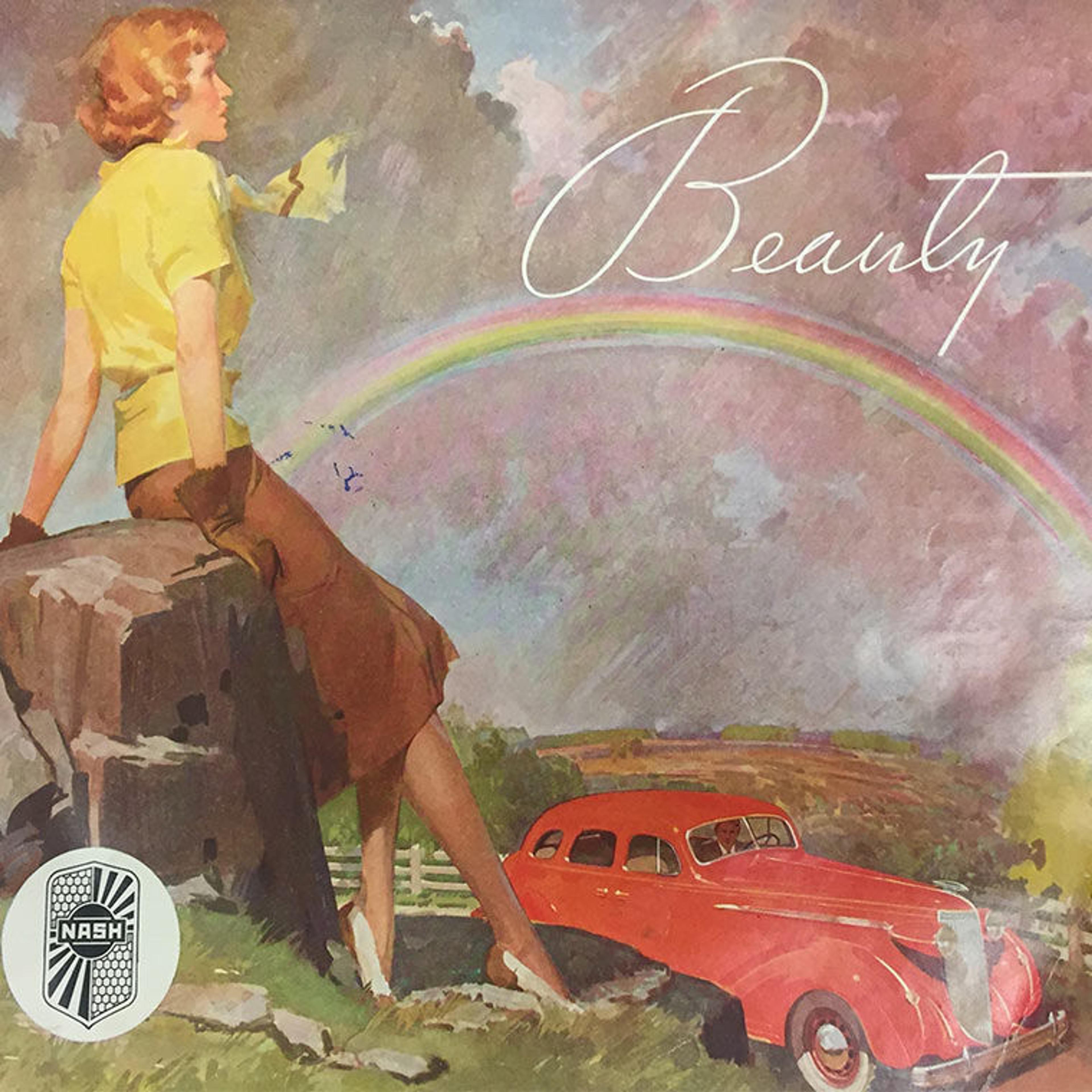
Renault, Renault: Dauphine, Gordini, Caravelle, 4CV (Boulogne-Billancourt, France: Régie nationale des usines Renault, 1961). Gift of the Friends of the Thomas J. Watson Library
The subject is posed at a three-quarter angle, positioned so that the viewer gazes at the long, graceful form from the front. A wash of light shines in from a source somewhere outside of the frame of the image, highlighting the contrast of angles and curves. Hidden beneath the serene satin surface lie complex serpentine channels coursing with heat and energy, rearing to move with a propulsion of power and speed. The subject is a storm-cloud blue 1958 Buick Special. It is a good-looking vehicle, vibrantly advertised.

General Motors Continental, Buick 1958: Nouveau sommet de luxe et de prestige (Anvers: General Motors Continental, 1958). Gift of the Friends of the Thomas J. Watson Library
The driver of the car is a woman leading her family on an outing. She is in a position of power behind the wheel, the captain of her family's adventure. Her husband and son stand just outside of the car looking onward while a young daughter gazes out of the back window. The advertisement promotes not only the car, but the lifestyle that it inspires. It convinces the viewer that his or her life could mimic this ad, if only they owned the same car. The perfect model of 1950s style and coiffeur, the driver is the picture of the American Dream. The advertisers have succeeded in making her, and along with her, the Buick, enviable. To quote what Don Draper said about a similar ad tactic that appeared in an early episode of Mad Men, "men want her and women want to be her." Desire sells.
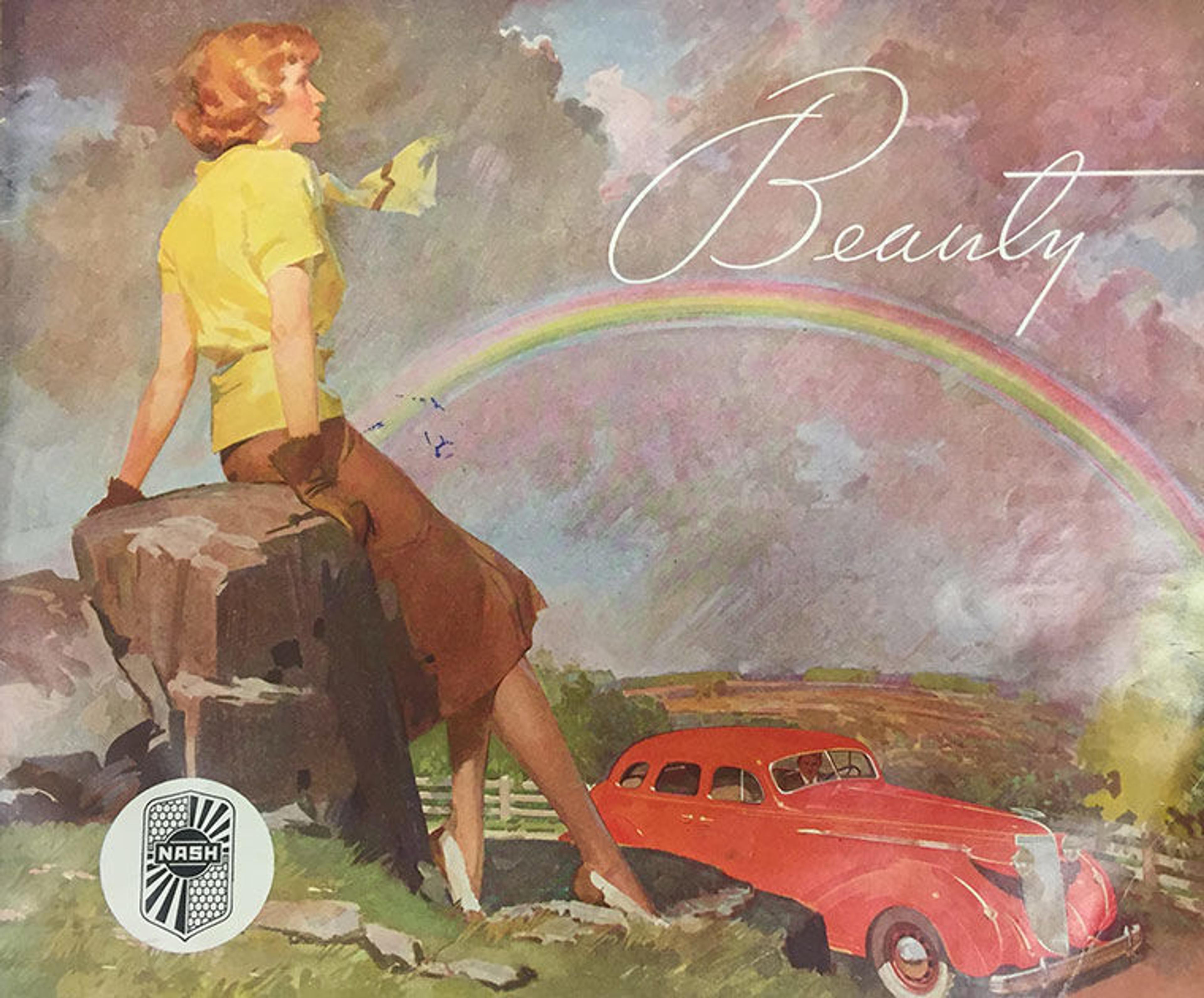
Nash Motors Company, Nash Ambassador Eight (Wisconsin: The Nash Motors Company, 1936).
I was introduced to Watson Library's collection of twentieth-century American and European automobile trade catalogues by Chief Librarian Ken Soehner, whose animated elevator pitch about these time-capsule-like objects and the purpose they serve within the library is infectious. While relatively small in comparison to the breadth of other subjects found on the library's shelves, this may be one of the largest collections of its kind. The collection is active: we continue to acquire automobile catalogues at auctions, from book sellers, and from car enthusiasts when we find exceptional examples.
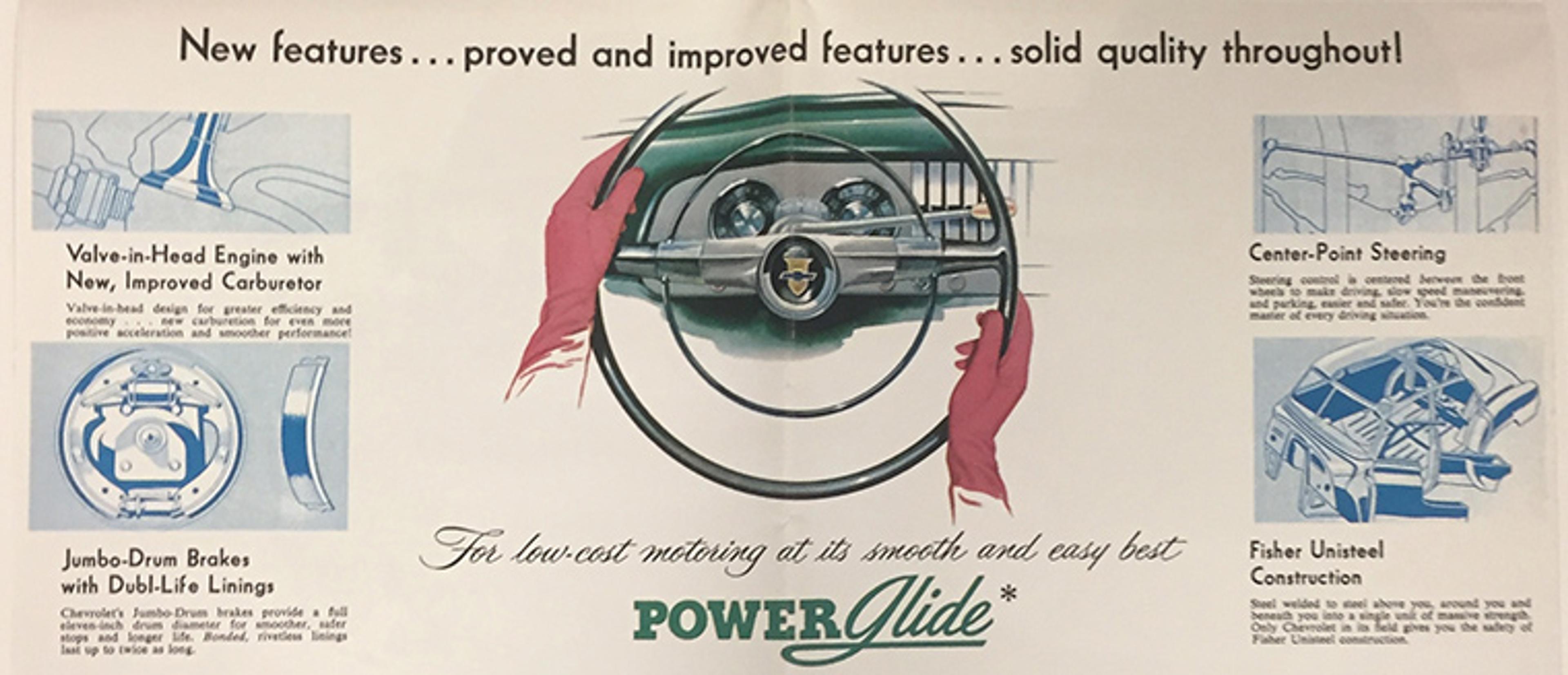
General Motors Corporation. Chevrolet Motors Division, '52 Chevrolet: America's Most Beautiful Low-priced Car (Detroit, Michigan: Chevrolet Division of General Motors, 1951). Gift of the Friends of the Thomas J. Watson Library
Unmatched in their value as a primary source, these catalogues are windows into the style, design, culture, and writing of their time period. Some catalogues focus on technical details of cars, showing cross-section drawings of the latest innovation in motors and carburetors, while others paint dreamy narratives meant to engross the viewer and convince them that they will lead equally idyllic lives, as soon as they purchase this car. The compelling use of color, Hopper-esque light and perspective, stylistic graphic design, and hyperbole all work together to achieve this.
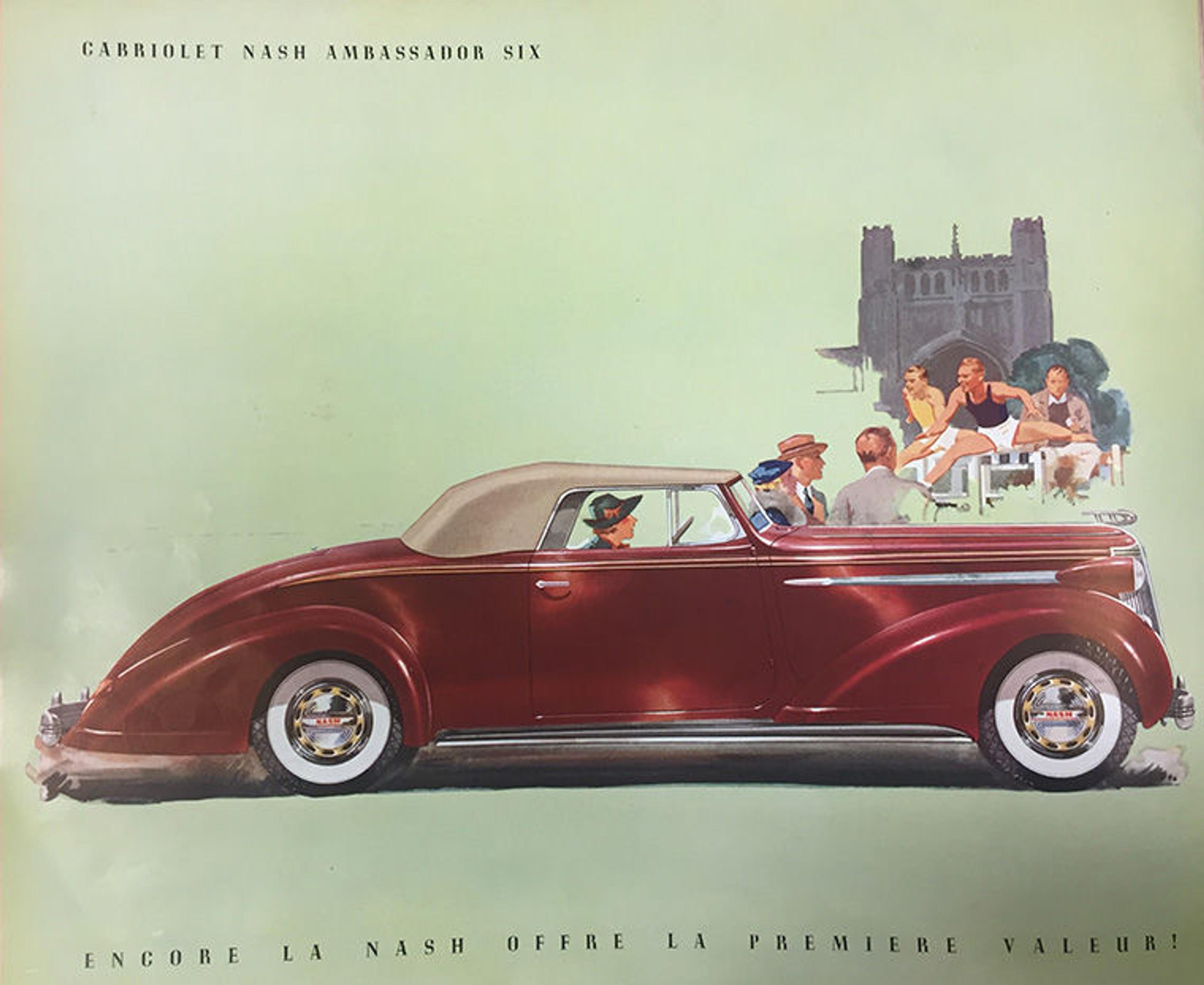
Nash Motors Company, Nash Ambassador Eight (Wisconsin: The Nash Motors Company, 1936).
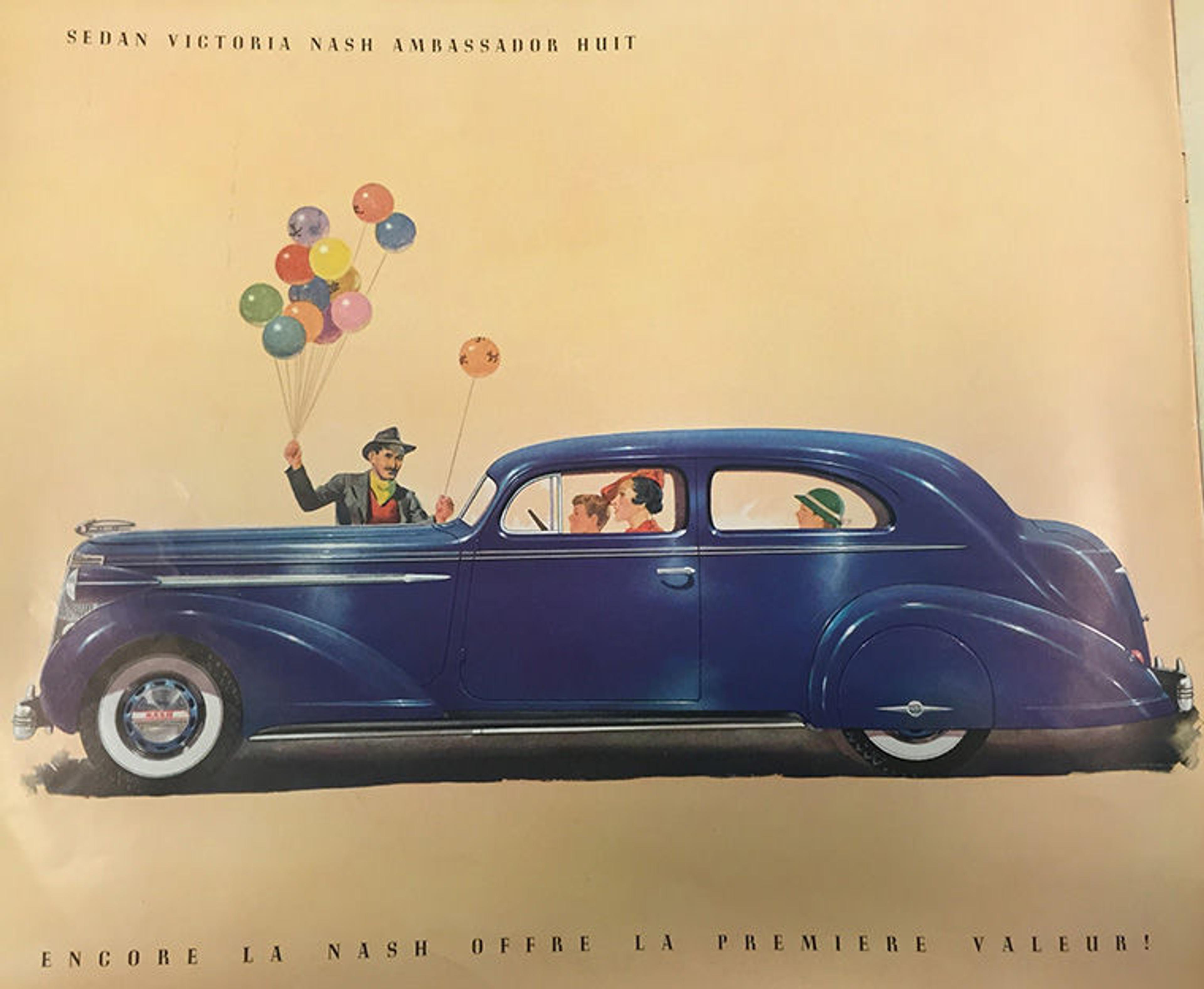
Nash Motors Company, Nash Ambassador Eight (Wisconsin: The Nash Motors Company, 1936).
Those of us who wept through all six seasons of Downton Abbey know that women were driving long before they appeared in these ads (assuming the historical accuracy of the show holds up). We watched not-yet-glamorous Lady Edith Crawley find purpose in World War I England by learning to drive Lord Grantham's elegant 1911 Renault when all of the able-bodied men she and her sisters grew up with were drafted to the front. Despite her grandmother's iconic disapproval, Lady Edith was in good company with real-life women who were learning the thrill and freedom that came with the timely practicality of learning to drive. Back in the real world, Emily Post and Edith Wharton were notable female motorists in the United States, adding popularity and acceptance to female driving due to their fame as writers.

Lincoln Motor Company, Lincoln Zephyr V-12: Design and Performance Ahead of the Times (Detroit: Lincoln Motor Company, 1936). Gift of the Friends of the Thomas J. Watson Library
More often than not, automobile ads from the mid-twentieth century in Watson's collection of catalogues highlight men: fathers taking their families out for a drive through the country, husbands whisking their wives out of Westchester for a night of dancing at El Morocco. However, as a twenty-first-century woman, the limited number of catalogues in this collection that feature female drivers are of particular interest to me.
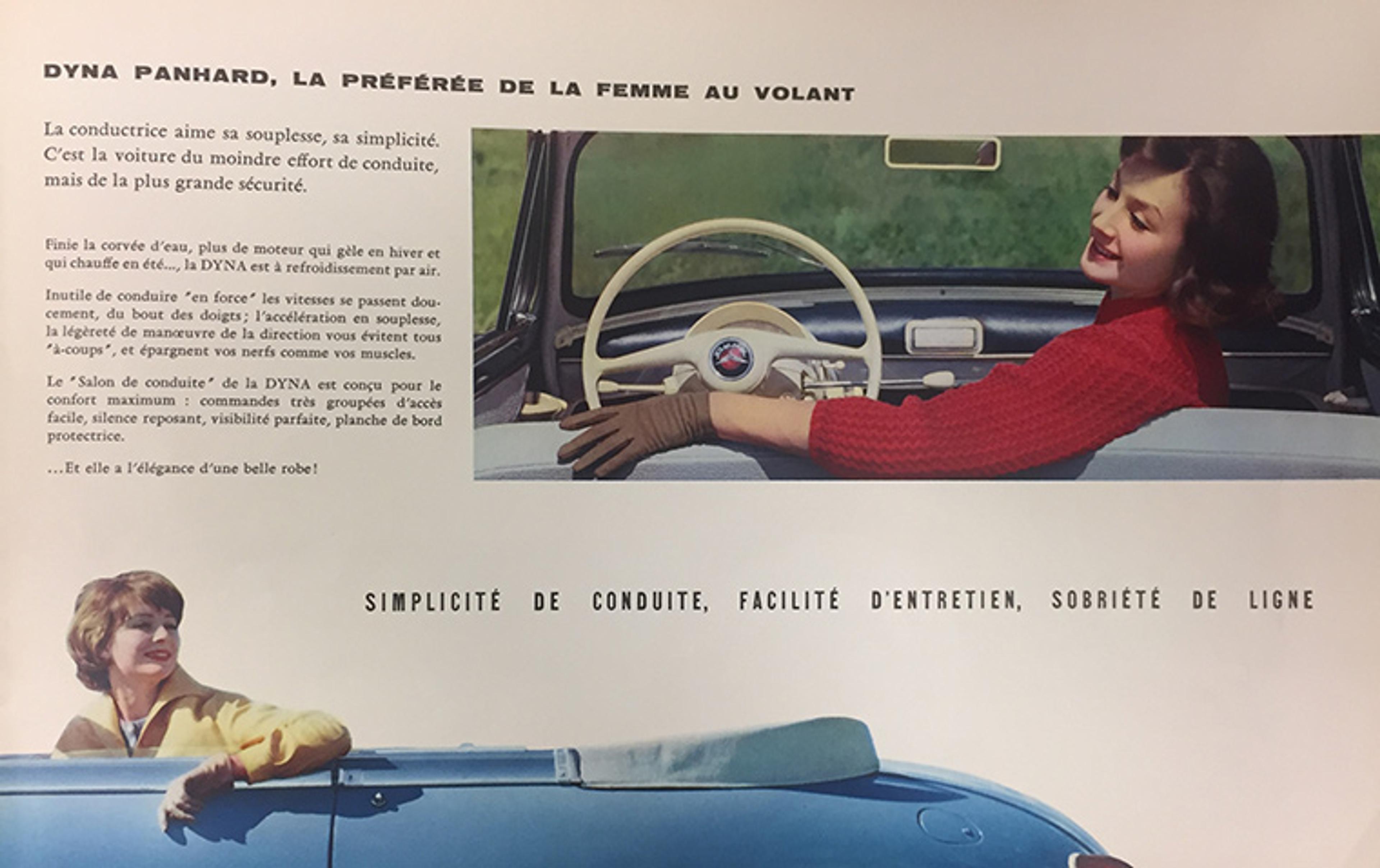
Panhard (Firm), Dyna: Notre amie (Paris: Draeger, 1958). Gift of the Friends of the Thomas J. Watson Library
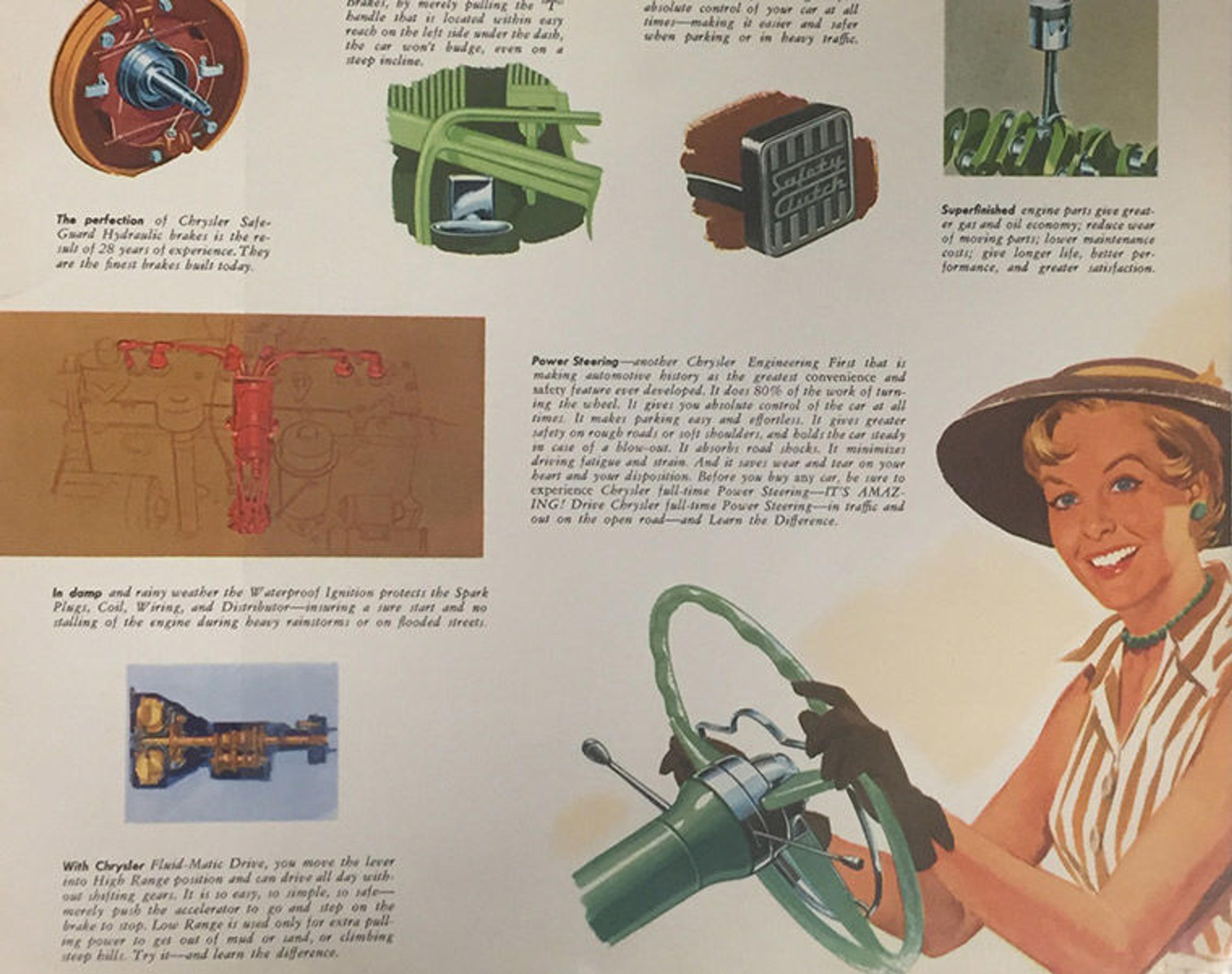
Chrysler Corporation, The Most Beautiful Chryslers Ever Designed: The Windsor and Windsor Deluxe Models (Detroit: Chrysler Sales Division, 1952).
Jim Donnelly gives relevant cultural and societal context to advertisements of this time in his essay "Creating Desire, One Page at a Time," in the opening of Taschen's book Automobile Design Graphics, writing:
Very often they focused more on people than cars. Noticeably, women continued making their way into automotive ads, and without a male to guide them. Cars had already been marketed directly to women, such as the Detroit and Baker electrics, and then moving on to the first self-starter, offered by Cadillac in 1912, to make cars easier and more comfortable to drive.
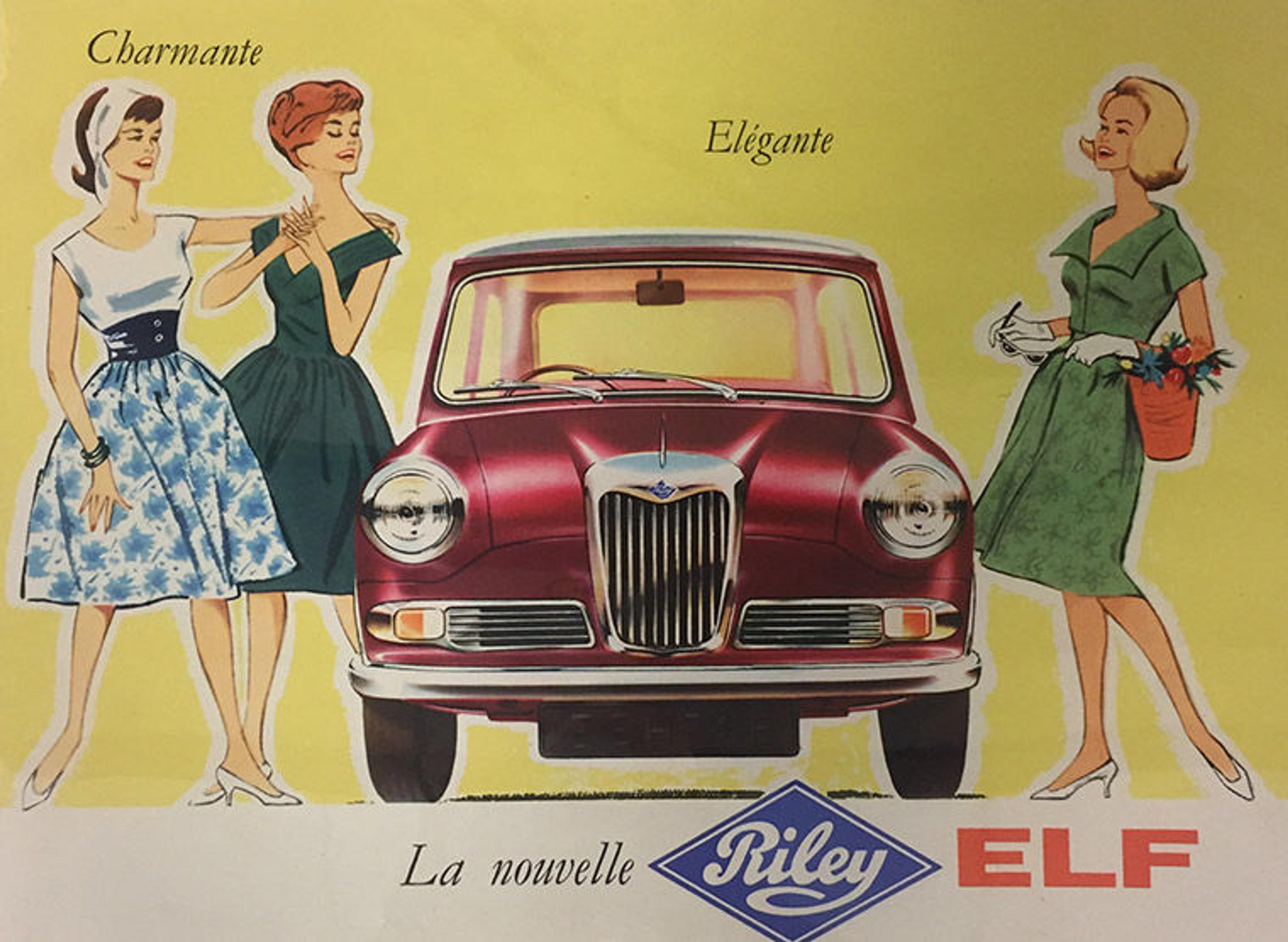
British Motor Corporation, La nouvelle Riley ELF (Brussels: Ets P. Decrose, S.A., 1961).
The prevalence of automobile ads as household objects helps to explain why marketing skewed toward women. In the same Taschen book, Steven Heller's essay "Auto Brochures and the Sublimation of Desire" points out that while men were the primary earners from the beginning of the commercial automobile industry through the late twentieth century, the middle-class white women who are featured in car ads were the ones who decided how to spend their family's earnings. Thus, featuring enviable women behind the wheel would have appealed directly to the product's consumer—seducing the person who would likely make the decision about this large purchase.
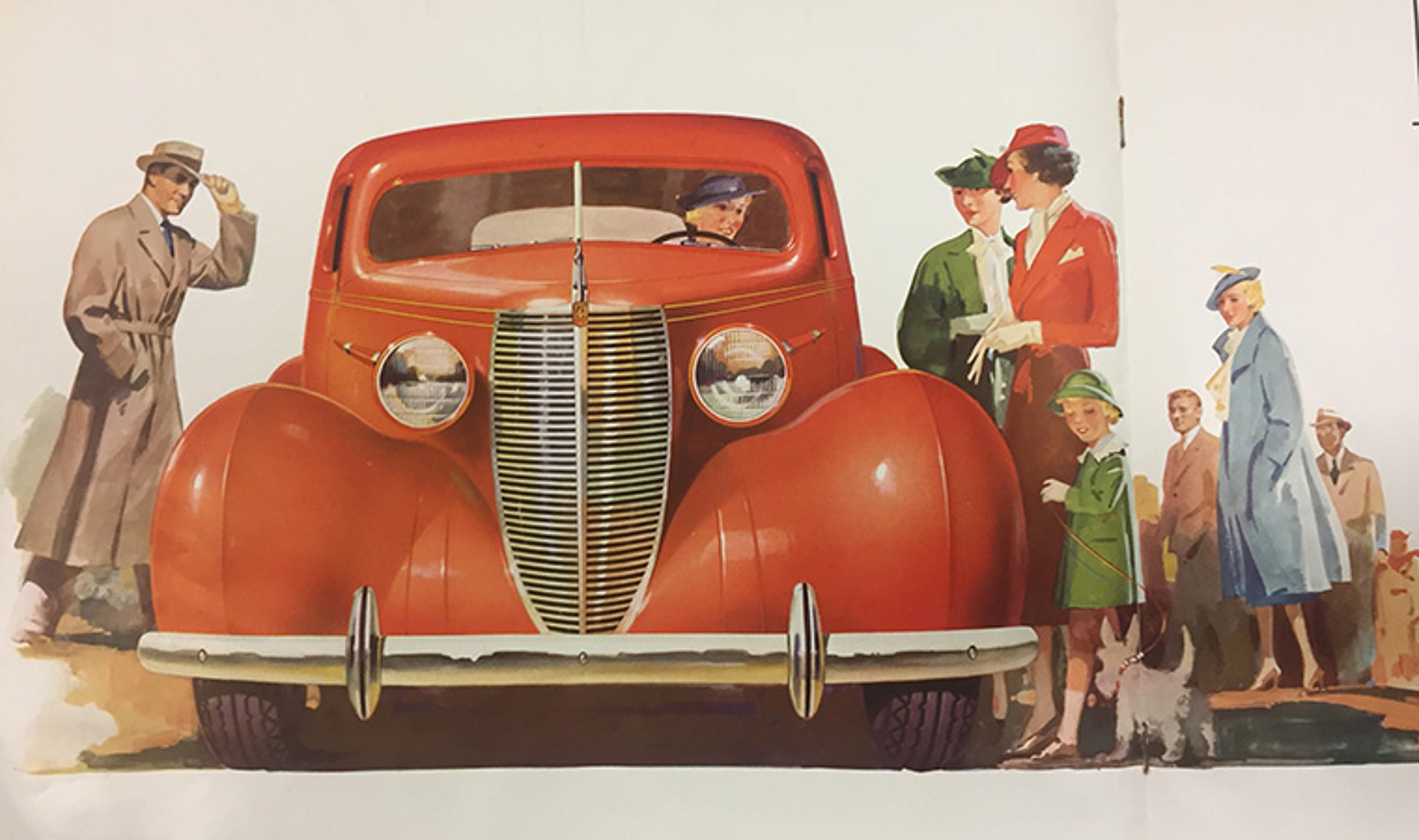
Nash Motors Company, Nash Ambassador Eight. (Wisconsin: The Nash Motors Company, 1936).
Regardless of the original sales-based intent behind depicting women driving, these ads are important for the role they played in familiarizing society with and normalizing the female driver. Having women driving and enjoying cars in advertisements placed in households across the world made the real occurrence more acceptable. It would eventually contribute to making women enjoying the freedom and autonomy of automobility a normal occurrence, which was a welcome step toward modernity.
